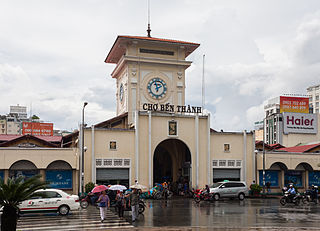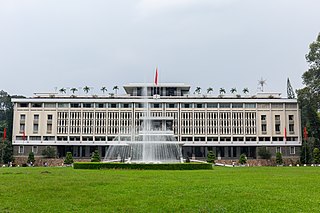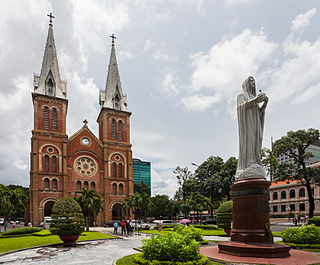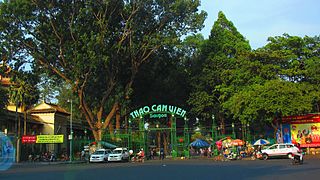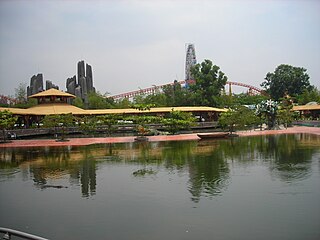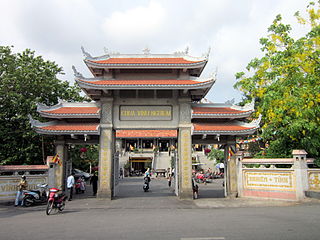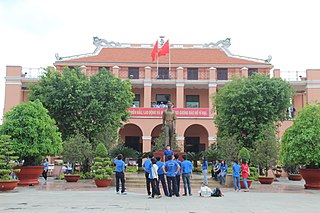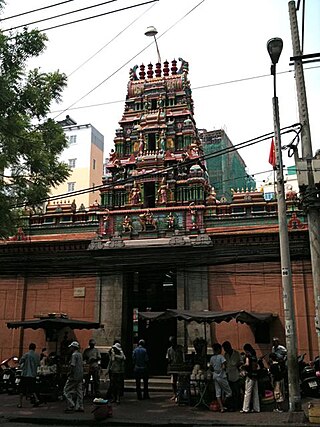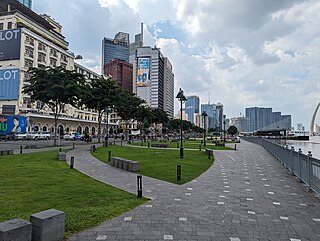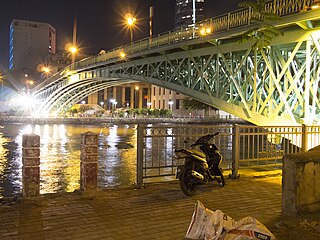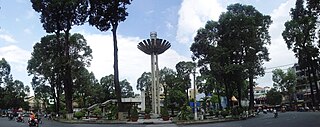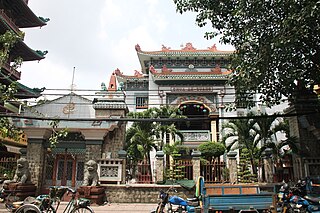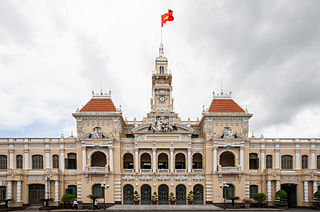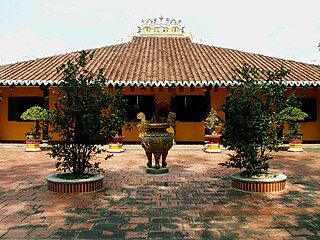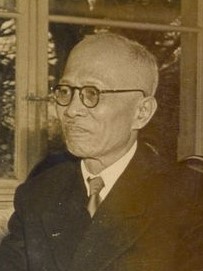17 Sights in Ho Chi Minh City, Vietnam (with Map and Images)
Legend
Premium Sights
Book tickets, guided tours and activities in Ho Chi Minh City.
Guided Free Walking Tours
Book free guided walking tours in Ho Chi Minh City.
Welcome to your journey through the most beautiful sights in Ho Chi Minh City, Vietnam! Whether you want to discover the city's historical treasures or experience its modern highlights, you'll find everything your heart desires here. Be inspired by our selection and plan your unforgettable adventure in Ho Chi Minh City. Dive into the diversity of this fascinating city and discover everything it has to offer.
Sightseeing Tours in Ho Chi Minh CityActivities in Ho Chi Minh CityBến Thành Market is located in the center of Hồ Chí Minh City, Vietnam in District 1. The market is one of the earliest surviving structures in Ho Chi Minh City and an important symbol of the city. Ben Thanh Market is a famous destination for many local and foreign tourists from all around the world. The market operates all year round and opens at around 6am every day until the official closing time at 6pm. After 6pm, the day market transitions into a night market which runs until 10pm.
The Independence Palace, also publicly known as the Reunification Convention Hall, is a landmark in Ho Chi Minh City, Vietnam. It was designed by architect Ngô Viết Thụ and was the home and workplace of the president of the Republic of Vietnam. It was the site of the Fall of Saigon on 30 April 1975 that ended the Vietnam War, when a North Vietnamese Army tank crashed through its gates.
3. Củ Chi Tunnels
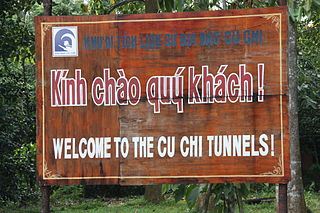
The tunnels of Củ Chi are an immense network of connecting tunnels located in the Củ Chi District of Ho Chi Minh City (Saigon), Vietnam, and are part of a much larger network of tunnels that underlie much of the country. The Củ Chi tunnels were the location of several military campaigns during the Vietnam War, and were the Viet Cong's base of operations for the Tết Offensive in 1968.
4. Saigon Notre Dame Cathedral
Notre-Dame Cathedral Basilica of Saigon, officially Cathedral Basilica of Our Lady of The Immaculate Conception is a cathedral located in the downtown of Ho Chi Minh City, Vietnam. Established by French colonists who initially named it the Church of Saigon, the cathedral was constructed between 1863 and 1880. The name Notre-Dame Cathedral has been used since 1959. It has two bell towers, reaching a height of 58 meters (190 feet).
5. Saigon Zoo and Botanical Gardens
The Saigon Zoo and Botanical Gardens, or known locally as The Zoo, is Vietnam's largest zoo and botanical garden. The Saigon Zoo and Botanical Gardens was commissioned by Admiral Pierre-Paul de La Grandière in 1864, and was opened to the public in 1869, making it one of the world's oldest continuously operating zoos.
6. Khu du lịch Suối Tiên
Suối Tiên Amusement Park is an amusement park in District 9, Thu Duc City, Hồ Chí Minh City, Vietnam. The park includes several entertainment areas. The landscaping and attractions in the park illustrate Vietnam's history and legends, such as Âu Cơ and Lạc Long Quân as well as the Battle of Son Tinh and Thuy Tinh. An artificial seawater pool is located in the park for sea-bathers. There is also a dinosaur garden and a roller coaster called "Roller Coaster".
7. Vinh Nghiem Pagoda
Vĩnh Nghiêm Pagoda is a pagoda in an area of 6,000 square metres (65,000 sq ft) at 339, Nam Kỳ Khởi Nghĩa street, Ward 7, District 3 Ho Chi Minh City. This is the first pagoda in Vietnam to be built in Vietnamese traditional architecture style but with concrete. The highest structure in this pagoda is the 7-story, 40-metre-high (130 ft) tower. This pagoda houses and worship of one buddha and two bodhisattvas: Gautama Buddha, Manjusri, Samantabhadra. The Peace Bell was donated by a monk of Entsuji Temple in Fukushima, Japan. The seven-storey tower was built with the assistance of the Japan-Vietnam Friendship Association.
8. Ho Chi Minh Museum
Dragon House or Ho Chi Minh Museum is the original commercial port of Saigon. It is located on the Saigon River. Construction began in 1862 and more than a year later, in 1863, the house was completed. It is located at the junction of the Saigon River in District 4.
9. Sri Mariamman Temple
The Mariamman Temple in Ho Chi Minh City, Vietnam, is a temple dedicated to the Hindu goddess Mariamman. It was built in the late 19th century by Palaniappa Thevar from Pattukkottai, Thanjavur District a trade community from Tamil Nadu, India. The temple is now under the management of the Vietnamese Indian Children brought up by Late priest Attangudi Lakshmanan Chettiar who previously used to be the priest who managed the Thenday Yutthapani Temple at 66, Ton That Thiep, Quan 1, HCMC.
10. Bến Dược Memorial Temple
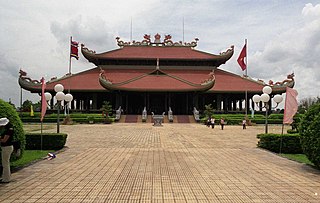
The Bến Dược Memorial Temple is a cultural history project by the Communist Party Committee and people of Ho Chi Minh City, Vietnam. It was built to memorialize the significant contributions of the soldiers and people who were killed in the Saigon-Gia Định region during the anti-American and anti-French fighting. The temple is sited at the Bến Dược hamlet, Phú Mỹ Hưng village, at the end of the Củ Chi tunnels. It is located on a 7-hectare plot in a gistorical heritage compound.
11. Công viên Bến Bạch Đằng
Bach Dang Quay is a wharf and park in District 1, downtown Ho Chi Minh City, Vietnam. It stretches along about 1.3 kilometres (0.81 mi) of the Saigon River from the Thủ Ngữ flagpole to the site of the former Ba Son Shipyard and covers an area of 23,400 square metres (252,000 sq ft).
12. Mong Bridge
The Mong Bridge is a steel bridge across the Bến Nghé River, connecting District 1 and District 4 of Ho Chi Minh City. It is one of the oldest bridges in that city. Originally named Pont des Messageries maritimes, it was built in 1893-1894 by the French construction company Levallois Perret for the merchant shipping company Messageries maritimes, replacing a ferry route. The bridge was completely removed in 2005 during the construction of the Saigon River Tunnel and afterwards rebuilt, turning it from a road bridge into a footbridge. In addition, the previous statue of An Duong Vuong holding a magic crossbow was also dismantled.
13. Turtle Lake
Turtle Lake is a lake surrounded by a traffic roundabout in District 3, Ho Chi Minh City, Vietnam. Located at the intersection of Pham Ngoc Thach, Tran Cao Van and Vo Van Tan streets, the lake is adorned with a modernist monument designed by architect Nguyễn Kỳ, and unveiled in 1969. Prior to this, a 1878-built French water tower existed, which was replaced by a small lake and monument in 1921. The area is popular for street food vendors, and in 2023 was developed into a pedestrian area.
14. An Quang Pagoda
Ấn Quang Pagoda in Master Vạn Hạnh Street is a meeting place for Vietnamese Buddhist leaders in Ho Chi Minh City and is a site of the Institute for Dharma Propagation. It has been at the focus of development of modern Vietnamese Buddhism as the seat of the School of Buddhist Studies and the headquarters of the Unified Buddhist Church of Vietnam.
15. Ho Chi Minh City Hall
The headquarters of the People's Committee of Ho Chi Minh City is one of the classic architectural works in Ho Chi Minh City, built from 1898 to 1908, inaugurated in 1909. During the French colonial period, this building was called the Hôtel de ville in French or the Western Palace in Vietnamese. By the time of the Republic of Vietnam, it was called Saigon City Hall because it was the workplace and meeting place of the capital government. Since the day of Vietnam's reunification, the building has been the workplace of the People's Committee of Ho Chi Minh City, the People's Council of Ho Chi Minh City and a number of other agencies.
Wikipedia: Trụ sở Ủy ban Nhân dân Thành phố Hồ Chí Minh (VI), Website
16. Giác Lâm Pagoda
Giác Lâm Temple is a historic Buddhist temple in Ho Chi Minh City, the largest city in Vietnam. Built in 1744, it is one of the oldest temples in the city. It was officially listed as a historical site by the Vietnamese Department of Culture on November 16, 1988, under Decision 1288 VH/QD. The temple is located at 565 Lạc Long Quân, Ward 10, Tân Bình district, near Phú Thọ Hòa region of the city. It stands on Cẩm Sơn, and is also known as Cẩm Đệm and Sơn Can.
17. Statue of Ton Duc Thang
Tôn Đức Thắng was the second president of Vietnam under the leadership of General Secretary Lê Duẩn. The position of president is ceremonial and Tôn was never a major policymaker or even a member of the Politburo, Vietnam's ruling council. He served as president, initially of North Vietnam from September 2, 1969, and later of a united Vietnam, until his death in 1980.
Share
How likely are you to recommend us?
Disclaimer Please be aware of your surroundings and do not enter private property. We are not liable for any damages that occur during the tours.
